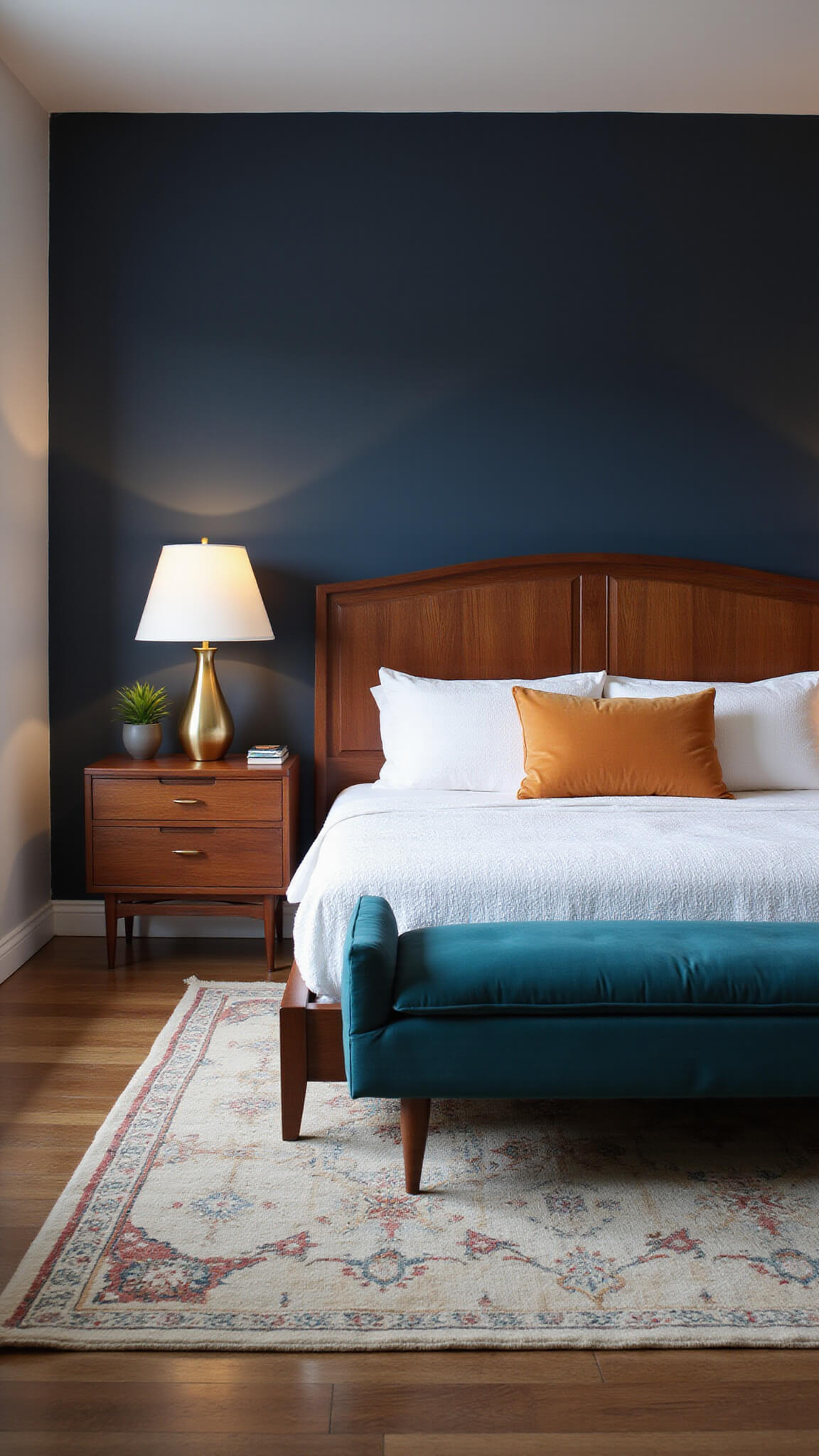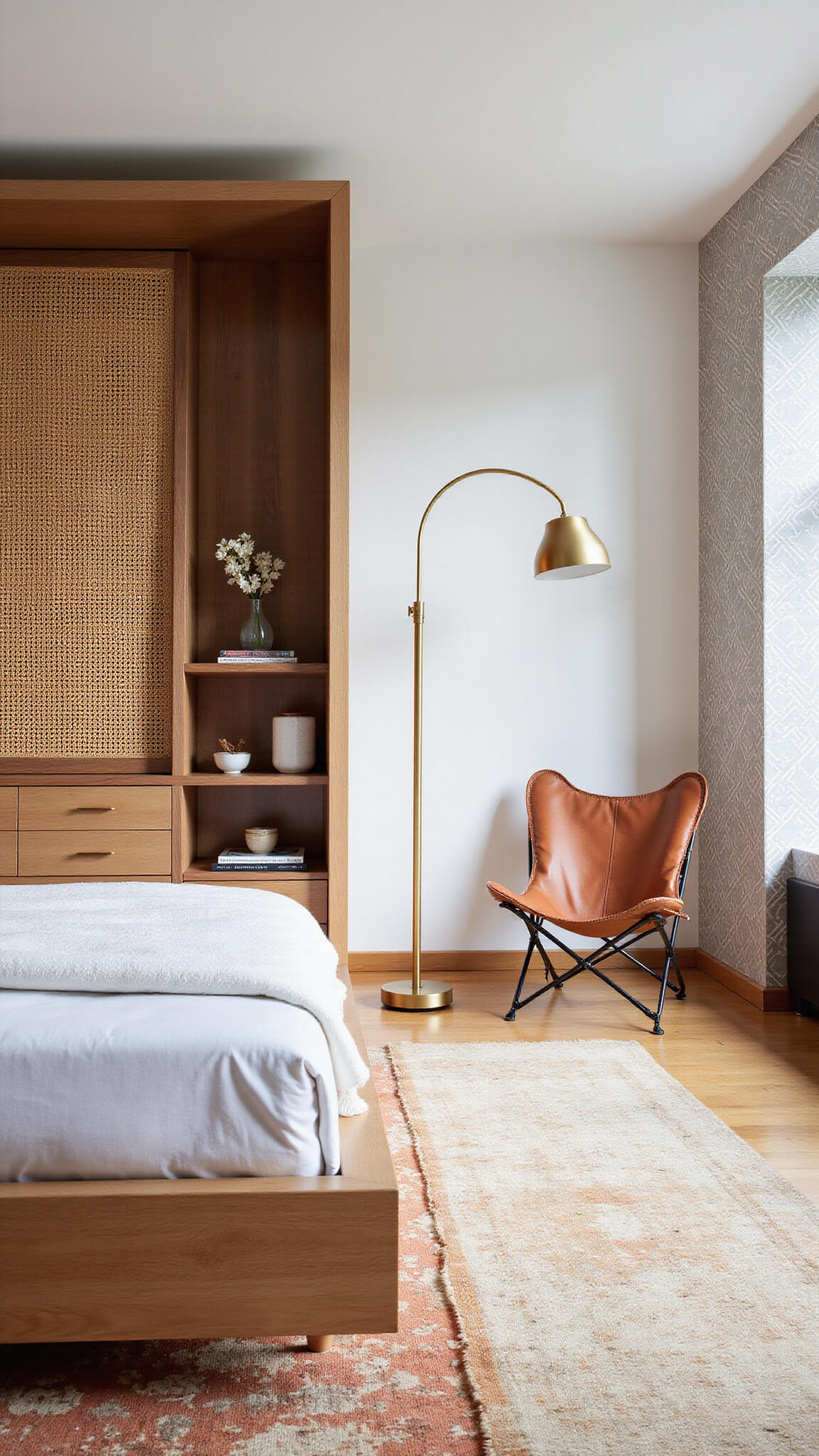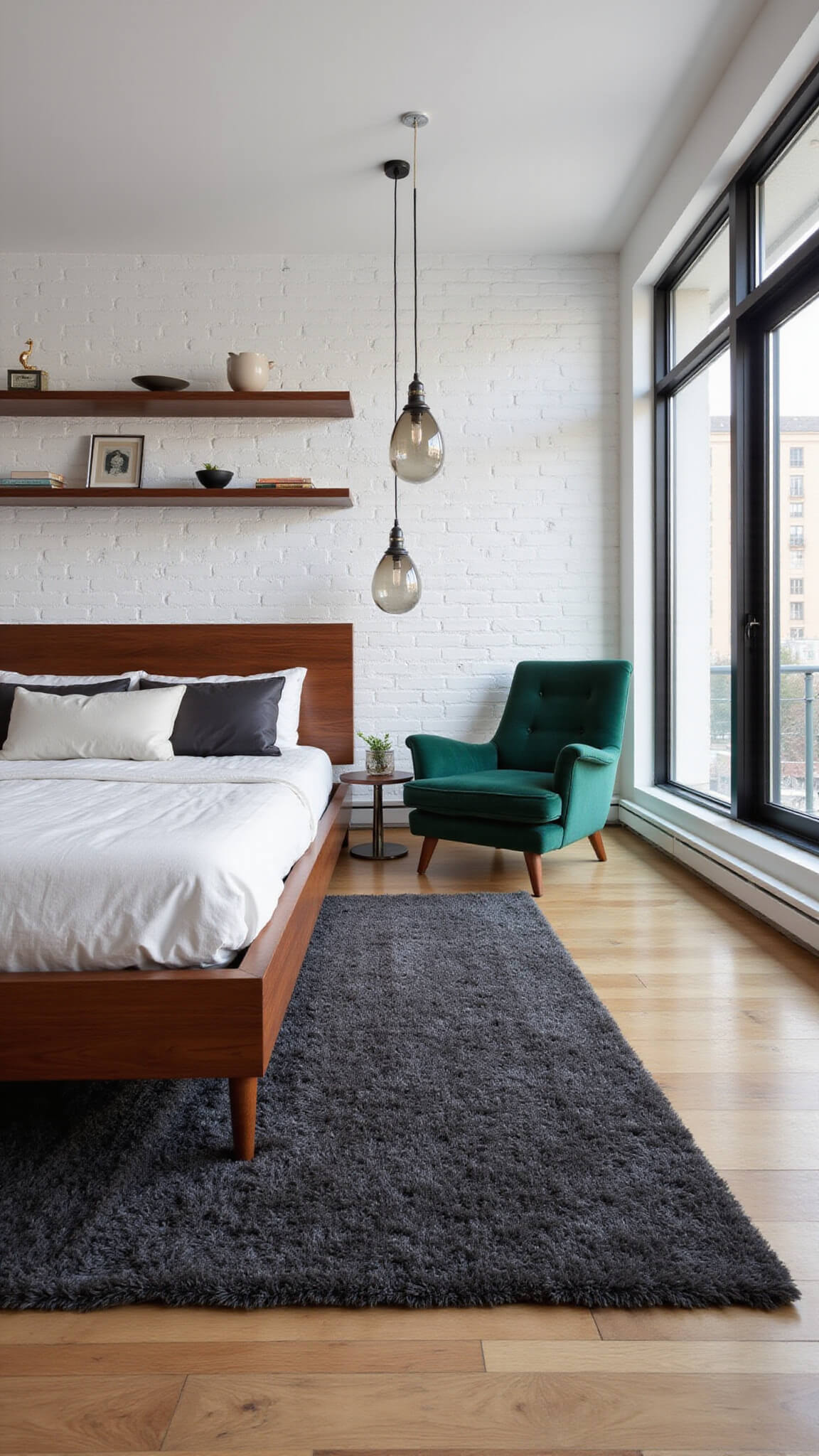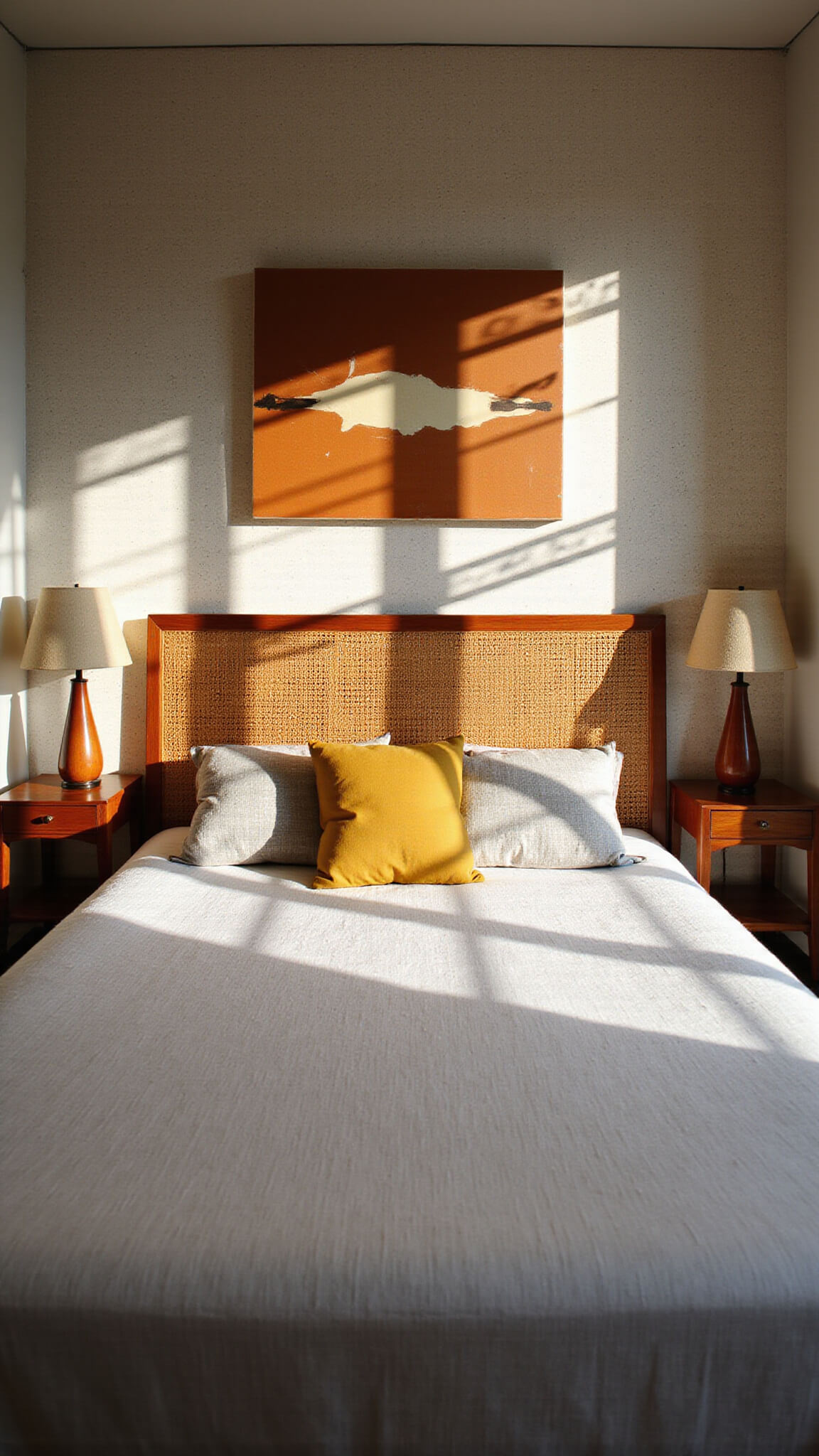Why Mid-Century Modern? The Magic of Timeless Design
Mid-century modern isn’t just a design trend – it’s a lifestyle. Imagine walking into a bedroom that feels both incredibly sophisticated and wonderfully comfortable. That’s the mid-century magic.

The Color Palette: From Neutral to Bold
Neutral Base, Bold Accent Rule
- Start with calm neutrals: white, beige, gray
- Splash in bold colors like:
- Mustard yellow
- Olive green
- Vibrant teal
- Warm orange

Furniture: Where Function Meets Beauty
Wood is King
- Teak, walnut, rosewood – these aren’t just woods, they’re design statements
- Furniture characteristics:
- Clean geometric shapes
- Minimal ornamentation
- Slim, functional profiles
- Splayed legs that scream “vintage cool”
Pro Tip: Look for bed frames with built-in nightstands to maximize space and style.
Textiles: Softening the Minimalist Edge
Texture is Your Secret Weapon
- Velvet in rich colors
- Geometric patterned throw pillows
- Moroccan rugs
- Pompom blankets
Lighting: More Than Just Illumination
Lighting in mid-century modern design is an art form:
- Pendant lights with sculptural shapes
- Sleek table lamps
- Wall sconces that double as art pieces
- Maximize natural light with minimal window treatments
Creating the Perfect Layout
Space-Saving Strategies
- Floating nightstands
- Multifunctional furniture
- Add a small sofa or bench for extra seating
- Keep things open and breathable
Pro Designer Tricks
Mix and Match Like a Pro
- Blend mid-century with:
- Boho elements
- Scandinavian touches
- Coastal vibes
Styling Don’ts
- Avoid overcrowding
- Don’t fear negative space
- Balance minimalism with warmth
Budget-Friendly Tips
- Thrift stores are mid-century treasure troves
- Focus on key pieces (bed frame, lighting)
- DIY refinish vintage finds
- Use accessories to create the look without breaking the bank
Final Thoughts
Mid-century modern is more than a design – it’s a statement. It says you appreciate clean lines, functional beauty, and timeless style.
Ready to transform your bedroom? Start small, mix textures, play with colors, and most importantly – have fun with it!
Remember: Great design isn’t about perfection. It’s about creating a space that feels uniquely you.












